Picture this—
A customer reaches out for help at a critical moment. They try email, then chat, maybe even social media. Each interaction feels disjointed, scattered, and they end up repeating themselves—getting more frustrated with each passing minute.
Now, consider what this looks like from your team’s side: managing disconnected channels, manually prioritizing inquiries, and juggling a flood of tickets during peak hours.
This isn’t just inefficiency; it’s lost time, added costs, and, ultimately, a loss of customer loyalty.
At Tidio, we built our AI-powered Help Desk features to address exactly these challenges that support professionals like you face every day. Our new tools centralize all customer communications into a single platform, ensuring that no message goes unnoticed, and no channel is left out.
Paired with smart automation for tasks like ticket prioritization and categorization, these features help your team stay organized, respond faster, and stay focused on delivering a top-tier experience.
Be the first to try the newest AI help desk technology
Now—let’s explore our new features and how they benefit your business.
Traditional help desks vs. modern customer needs
Traditional help desks were built to handle customer inquiries through limited channels like phone and email, with a primary focus on ticket resolution and case management. However, customer expectations evolved—big time.
Today’s consumers expect instant, personalized support across multiple platforms, including live chat, social media, and mobile apps. This shift created a gap between what traditional help desks can provide and what modern customers demand.
Here are traditional help desk challenges you’re probably familiar with:
- Overwhelming number of email and phone requests
- Long wait times for email replies
- Thousands of order status questions
- Expensive to scale support
- Difficulty maintaining personalization
- Team burnouts and missed conversations
- Tedious manual tracking and reporting
Our new AI-powered Help Desk features make these problems a thing of the past. Our platform enables your team to keep up with customer expectations without sacrificing quality or personalization. It’s designed specifically for customer service teams who want to move away from manual work and tactfully adopt AI.
Keep reading to see the features and benefits you can expect with a smart help desk.
How Tidio’s AI Help Desk solves customer support challenges
At its core, our AI features automatically collect customer information and support queries, helping agents organize and prioritize all incoming messages across multiple channels.
But that’s definitely not all—here’s what our new AI Help Desk features offer:
1. AI chatbots and Flows for self-service
With over 75% of customers saying that self-service options are important, we had to step up the game. So, let me introduce our Flows builder and Lyro AI chatbot, which are designed to help your business streamline customer support with powerful, easy-to-maintain self-service solutions.
Lyro is Tidio’s AI chatbot built specifically for customer service. It has an average resolution rate of 70%, the best on the market when compared to other top alternatives. Powered by Claude LLM from Anthropic and Tidio’s proprietary AI mechanism, Lyro understands and responds to customer questions using natural language with a variety of tone options.
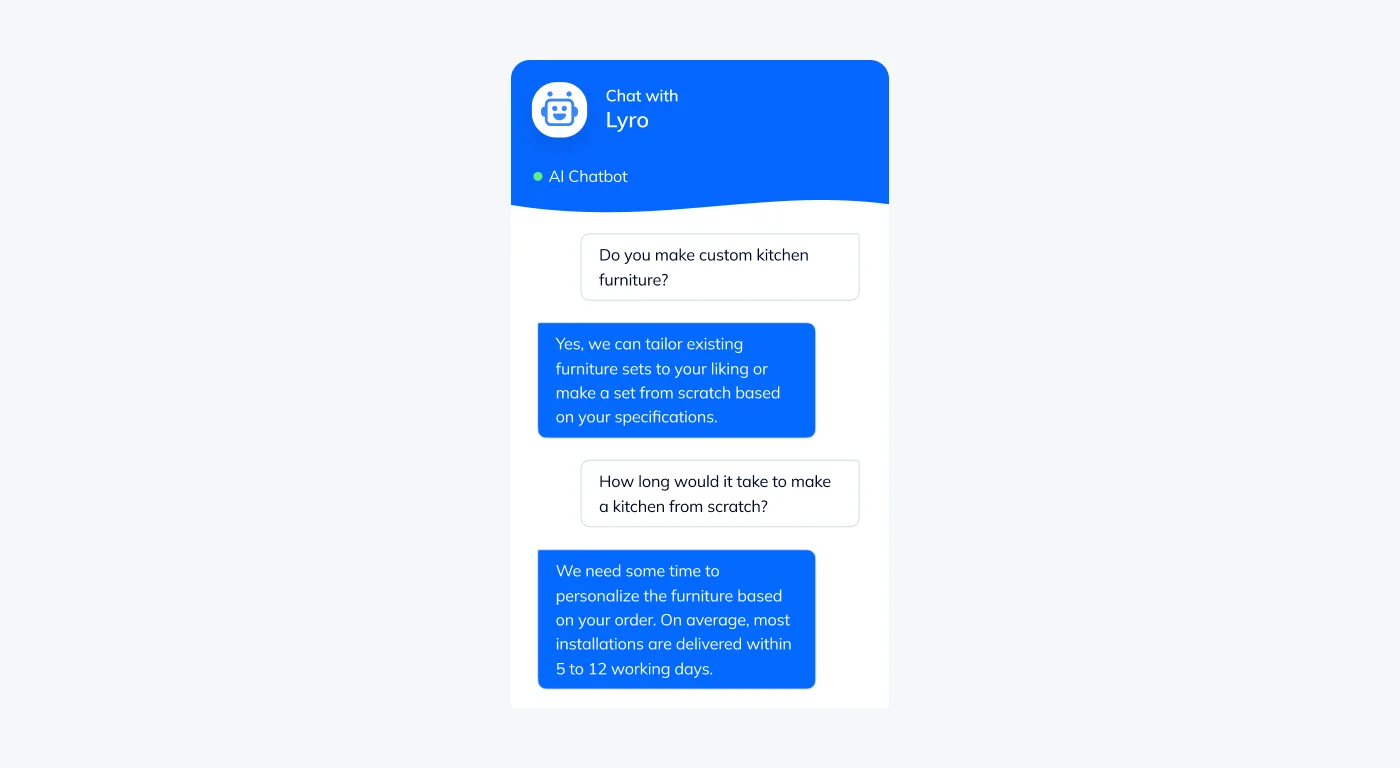
Unlike unreliable generative AI platforms, Lyro is trained on your business data to offer personalized, human-like support. It’s also self-sufficient and requires little maintenance and supervision—but you can monitor its progress and give feedback, just like with your human agents.
Key features of Lyro:
- Human-like responses that are friendly and conversational
- Ready out of the box
- Smart Views of requests to get a single overview of all customer communications
- Suggestions tab of requests to add to your AI’s knowledge base
Tidio Flows bring automation to life by managing customer interactions based on specific triggers. A Flow is a programmable rule-based system that proactively initiates chats with website visitors through defined conditions—if X happens, then do Y. As an essential part of Tidio’s Help Desk, Flows replace repetitive tasks and helps you showcase products and services on your website, supporting your customer support, marketing, and sales teams with smooth, consistent interactions.
You can get super creative with Flows. Here’s a few use cases our customers use it for:
- Answering FAQs instantly
- Generating leads and nurturing potential customers
- Reducing cart abandonment rates
- Cross-selling products to increase sales
For example, NUU uses Flows to communicate with website visitors and answer commonly asked questions:
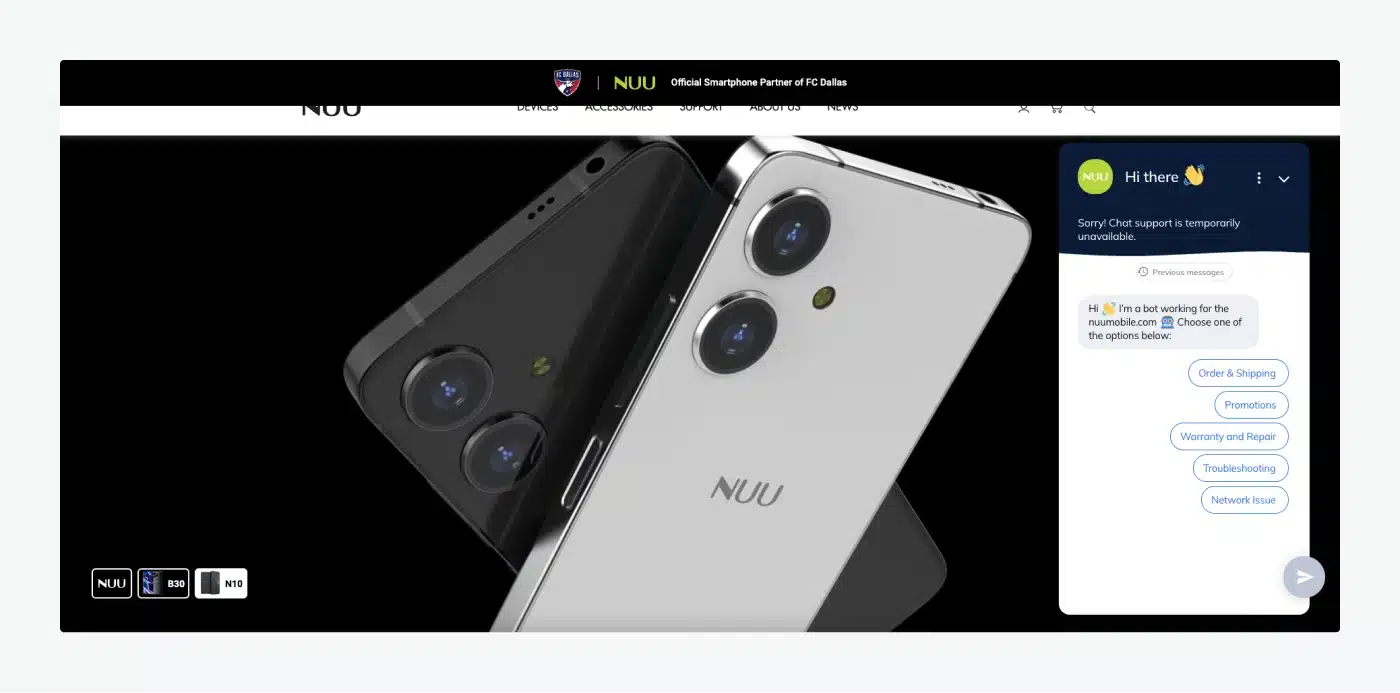
By combining automated help desk workflows with Lyro’s advanced AI conversational capabilities, you can seamlessly handle customer inquiries and engage website visitors with minimal human intervention. These features help you provide 24/7 support across channels with the same great level of service quality.
Read more: Find the best agentic AI solution for your unique customer service needs.
2. Lyro for ticketing
Tickets get lost, your support team has too many to sort, and your customers get frustrated because of the long wait. Sound familiar?
To handle this, Lyro AI is now integrated into our ticketing system and gives customers immediate responses to tickets created from multiple channels, including live chat and email. It also streamlines workflows for support teams by automating ticket routing and handling simple cases autonomously.
So, how does it work?
Since agents often handle more formal cases through email, Tidio designed Lyro so that it only responds to emails when it can confidently address the issue.
If the question or case is too complex for Lyro, it automatically routes the ticket to a human agent, maintaining the usual email flow. This automation ensures that customers receive accurate responses while complex cases get the human attention they deserve.
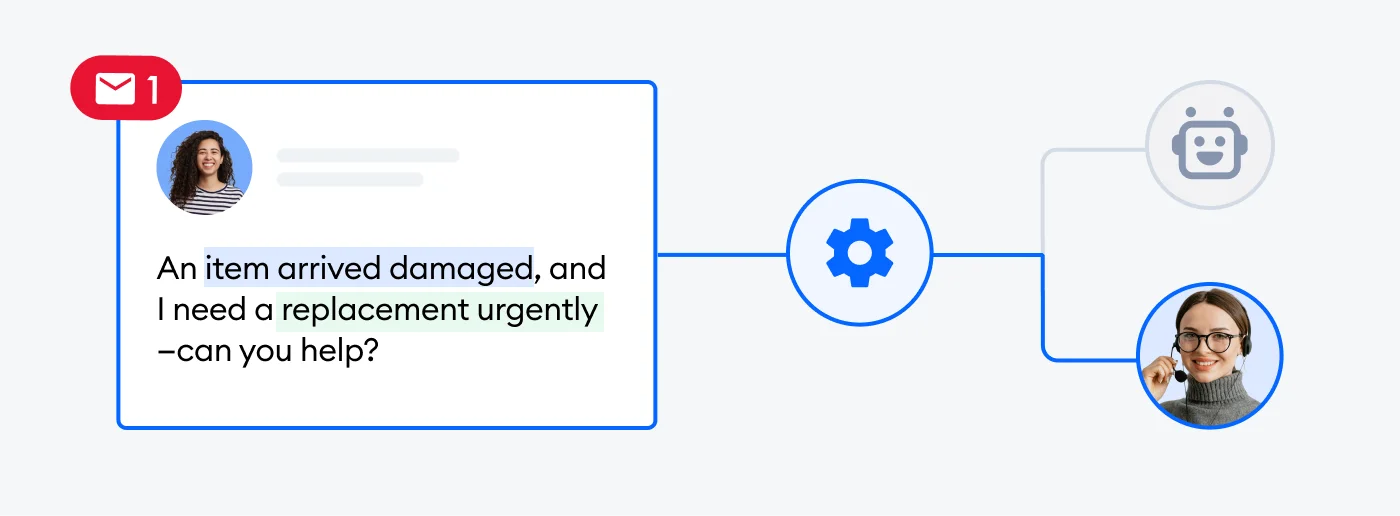
Benefits of Lyro’s ticketing integration:
- Cuts email response time from days to minutes
- Higher resolution rates reaching 60%
- Seamless integration with email, social media, and your website
- Implementation done within minutes
With Lyro integrated into Tidio’s Help Desk, you can leverage the most comprehensive AI-powered customer service platform on the market. Stay on top of crucial tickets, get actionable insights from a unified inbox, and ensure smooth transitions between automated and human support.
3. Omnichannel and multilingual support
Give your customers a great shopping and support experience on all channels. Our AI Help Desk lets you simultaneously reach customers on your website and in their favorite messaging apps all from one inbox.
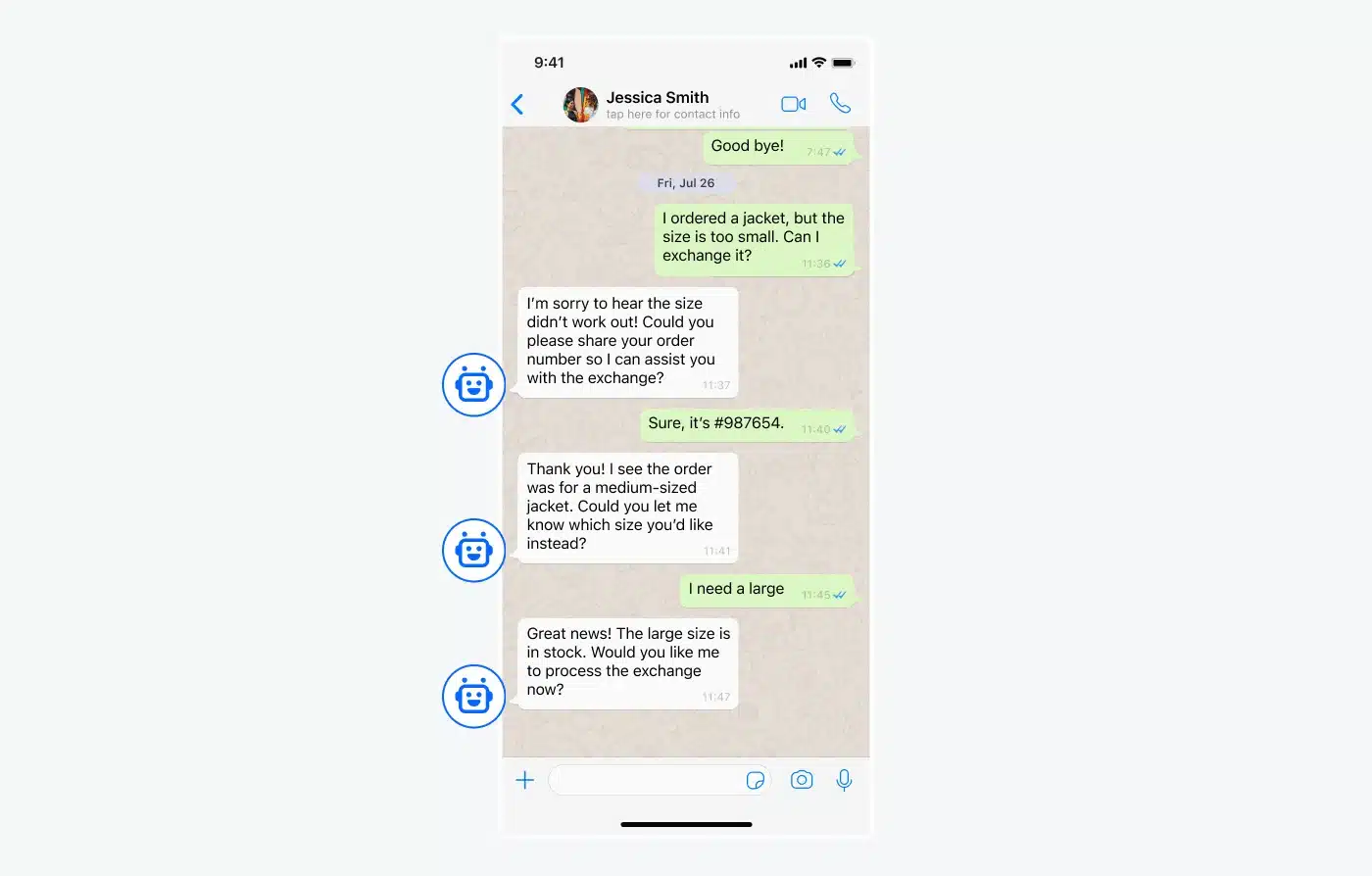
Social media is a central platform for customer service, bringing its own unique challenges. Everything is fast-paced, so it’s essential to give timely responses and maintain consistency across multiple touchpoints or you risk frustrating your customer.
Tidio’s Lyro AI helps you keep up with the demand by consolidating all customer interactions—chat, email, and social media—into a single, unified dashboard. This setup provides agents with a complete view of each customer’s history and interactions, ensuring that every inquiry receives an accurate and personalized response, regardless of channel.
Lyro also helps you go global. It can have live conversations with your customers in 11 other languages, including Spanish, German, Portuguese, and French. All the information it shares comes straight from your knowledge base, which is used as its training materials in the initial setup. There’s no risk of it going off script, so customers across Facebook Messenger, WhatsApp, and Instagram all benefit from the same convenient, quality support experience.
As customer service continues to shift, Tidio’s omnichannel capabilities prepare your brand to engage customers where they are, generating faster resolutions and greater satisfaction.
4. Workflow automation
Customer service is plagued with busywork. Tidio’s enhanced workflow automations are designed to reduce manual tasks for your team and accelerate your response times.
Lyro AI assists your team by analyzing each ticket’s urgency and context, immediately routing it to the best-suited agent. Customers receive quicker, more dependable resolutions, and support teams can focus on cases that need their attention first.
Key features include:
- Automated ticket routing: Connect customers with the most suitable agent to handle their issue
- Pre-defined triggers and rules: Automatically send messages to your visitors when they perform a specific action
- Case management: Track all interactions from beginning to end
- Auto-assignment of ticket: Allocate requests to the first available agent
The secret to using automation effectively lies in thoughtful customization and regular optimization. Tailoring automated workflows to meet the unique demands of your team and your customers creates a responsive, dynamic system that improves over time.
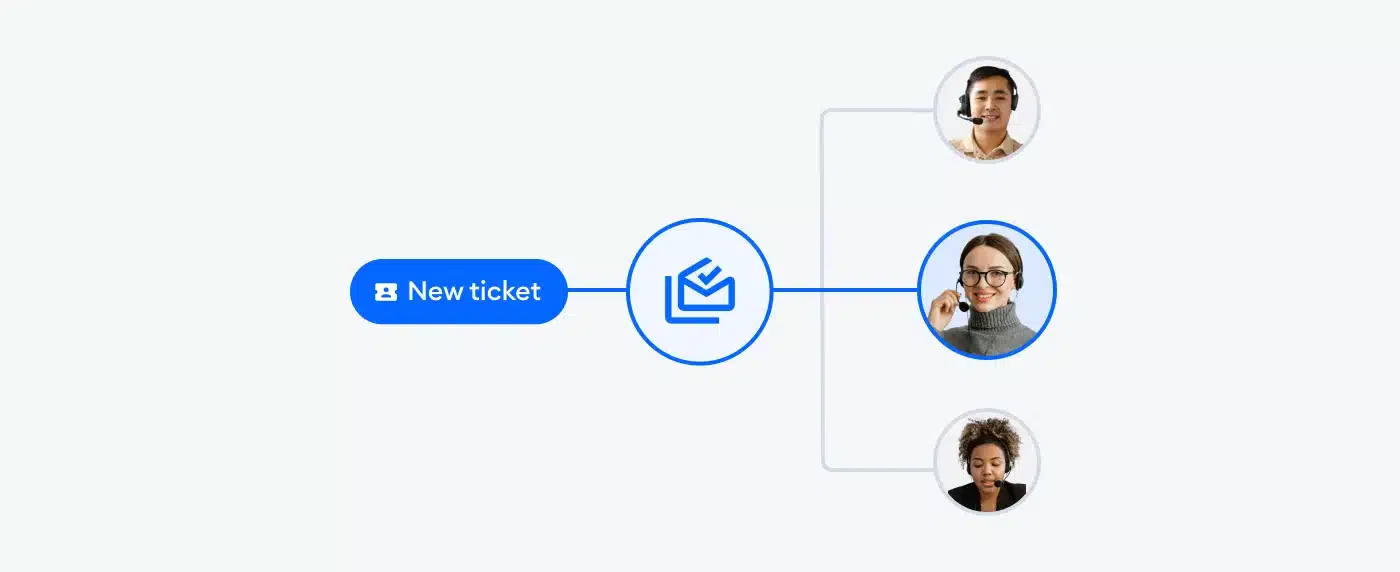
Start by automating repetitive tasks like initial responses and ticket prioritization, and then integrate Service-Level Agreements (SLAs) to set automated reminders for timely responses. You should also regularly review and adjust your automations based on team and customer feedback to ensure that workflows stay aligned with changing needs.
Workflow automations transform the way help desks operate, offering businesses a future-ready solution for delivering exceptional customer experiences.
5. Advanced reporting and analytics
Move beyond reactive customer support and become a proactive, data-driven force. Our AI Help Desk comes with advanced analytics and reporting for clear, actionable insights.
Built with user feedback in mind, this solution empowers help desk managers to make informed decisions about training and development needs, workflow optimization, channel management, proactive engagement, and much more.
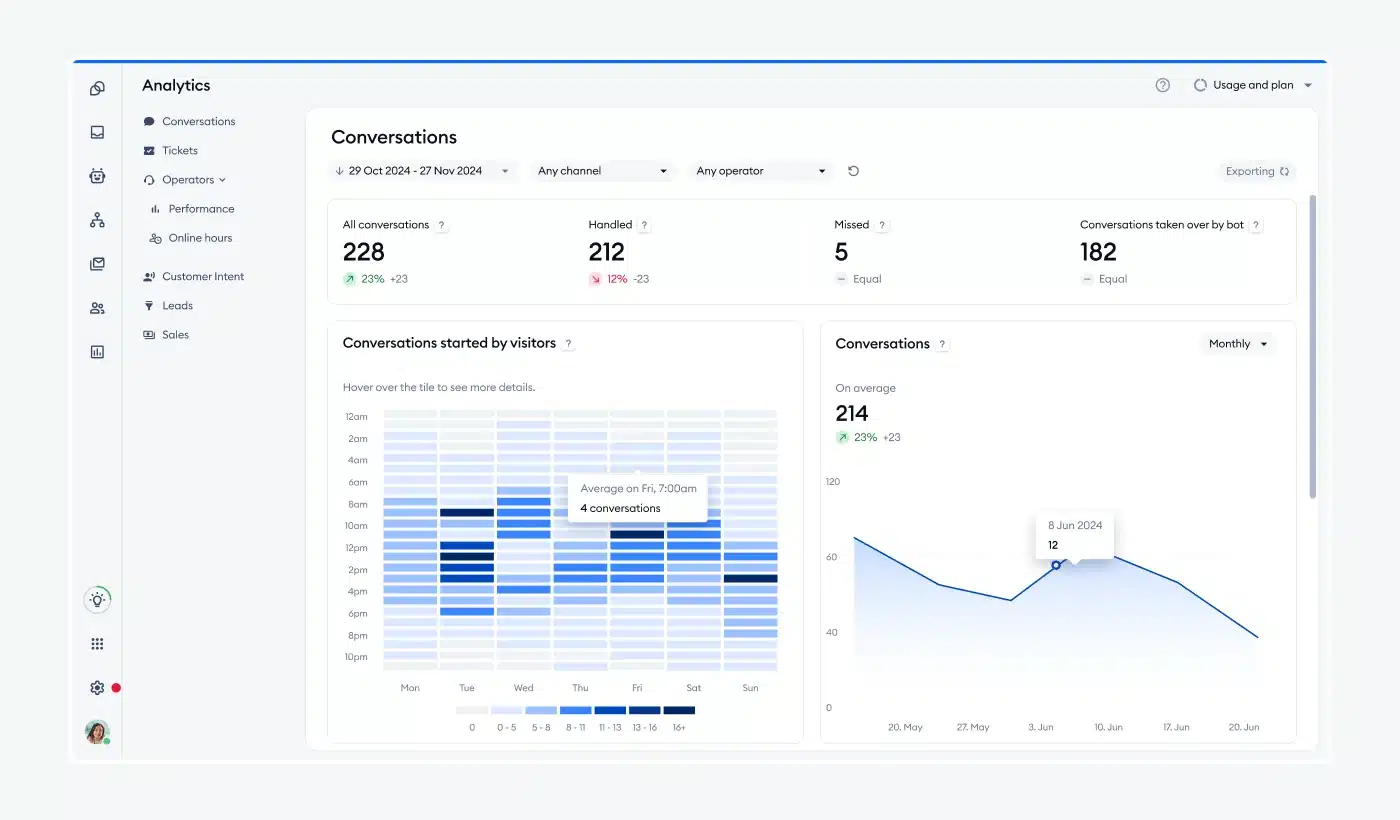
Our updated approach to analytics and reporting addresses the need for data to be straightforward and easy to interpret, which is a common challenge in other customer support software.
Many current analytics tools present information in ways that can feel confusing, especially when you’re given metrics without context or actionable steps. Tidio’s new analytics framework avoids this issue by allowing users to diagnose problems, understand the story behind each metric, and make informed adjustments to improve their help desk and team performance.
Key features of Tidio’s advanced analytics and reporting include:
- Actionable feedback for optimization: Get insights on how to improve your team’s and AI chatbot’s results
- Information hierarchy with components: Metrics are grouped into categories such as conversations, tickets, operators’ performance, customer intents, leads, and sales
- Trend tracking: View your results month-by-month to spot patterns
- Mode-specific metrics: Monitor your chats, tickets, leads, and sales results
Tidio’s advanced reporting and analytics empowers customer service managers to identify trends, resolve issues quickly, and drive continuous improvement.
Get started with Tidio’s AI Help Desk
By combining automation, actionable insights, and omnichannel support, Tidio’s AI Help Desk features empower your team to deliver fast, efficient, and personalized experiences across every channel.
Ready to transform your customer support?
Contact our team to learn more about the exciting new features and discover how Tidio can elevate your business.
Try out the new features

